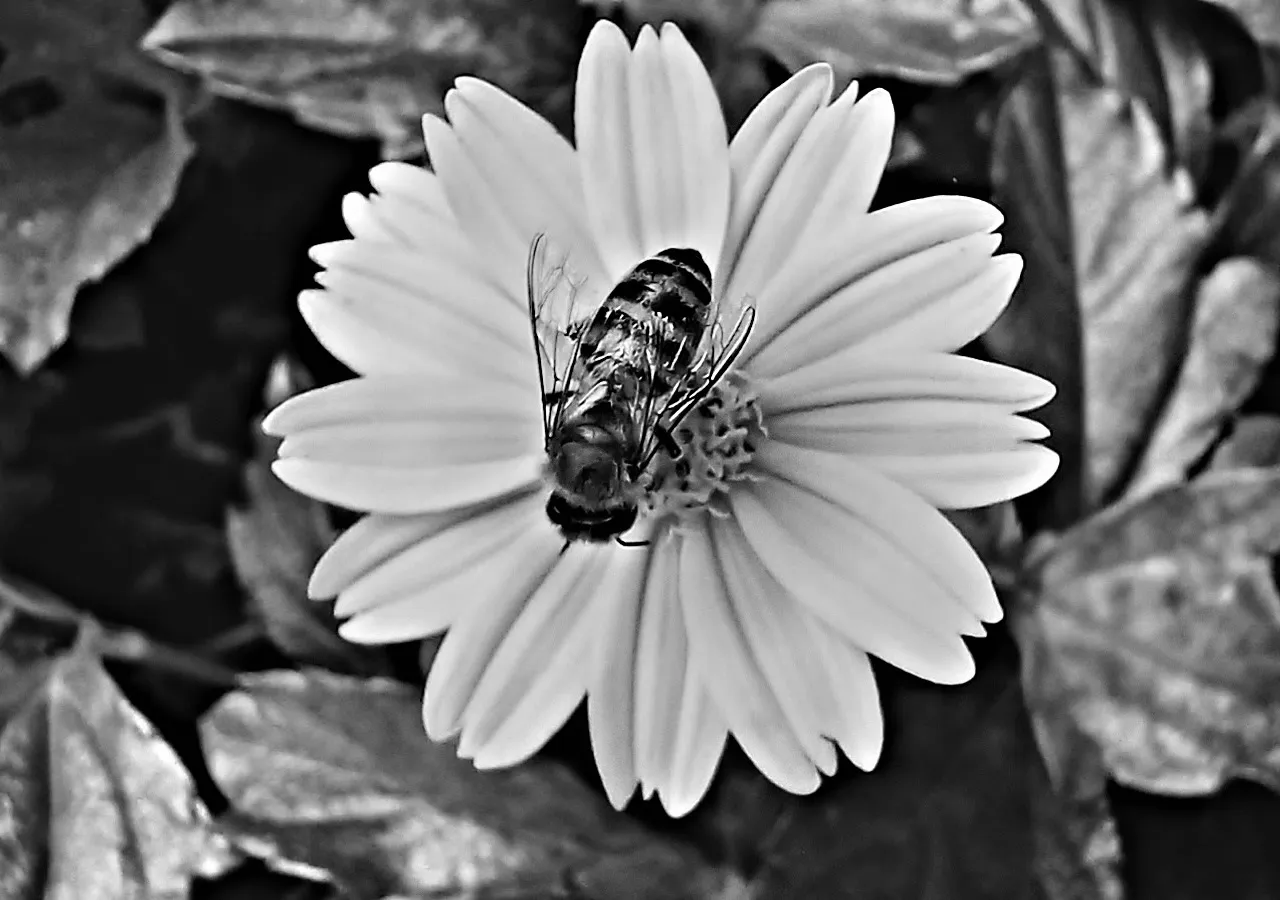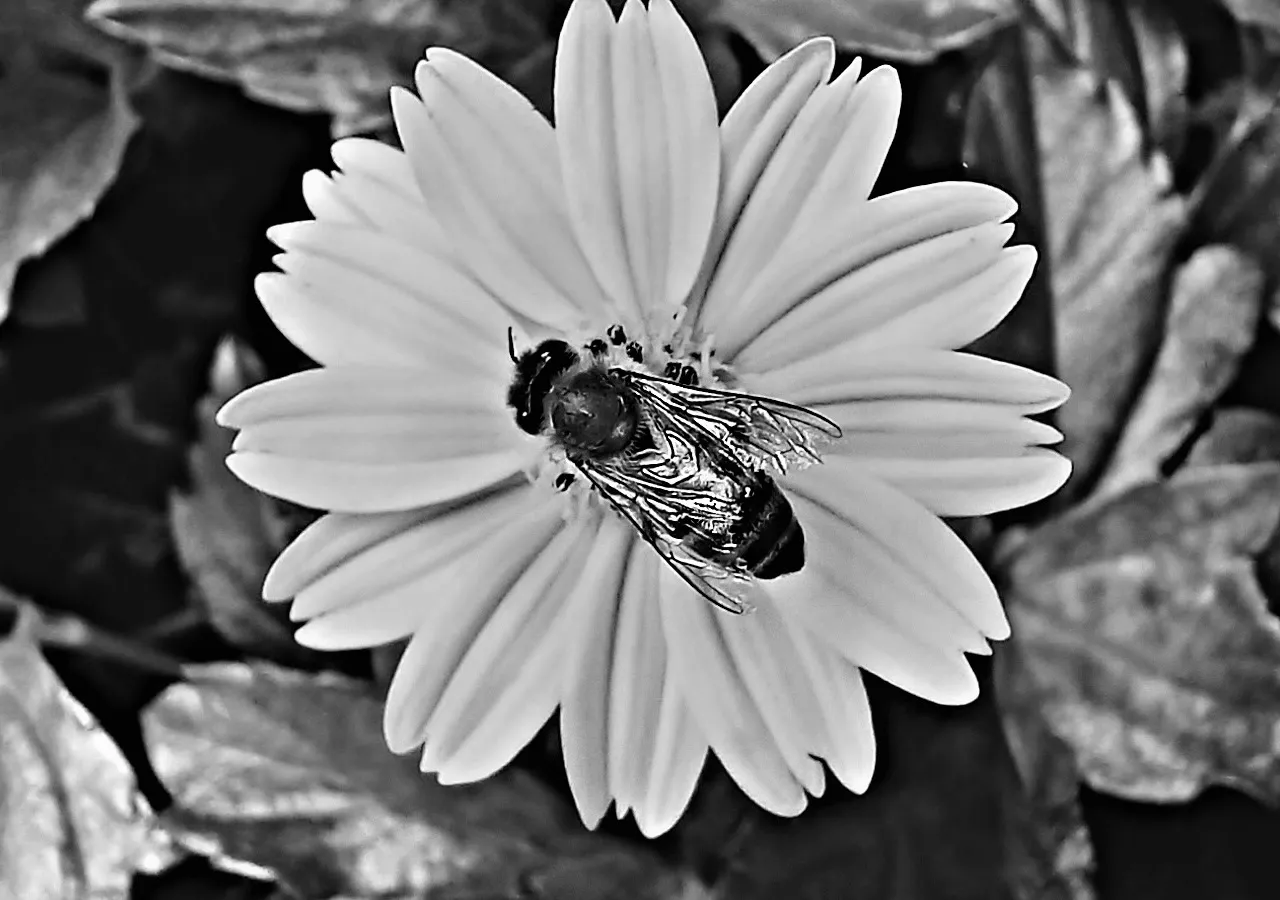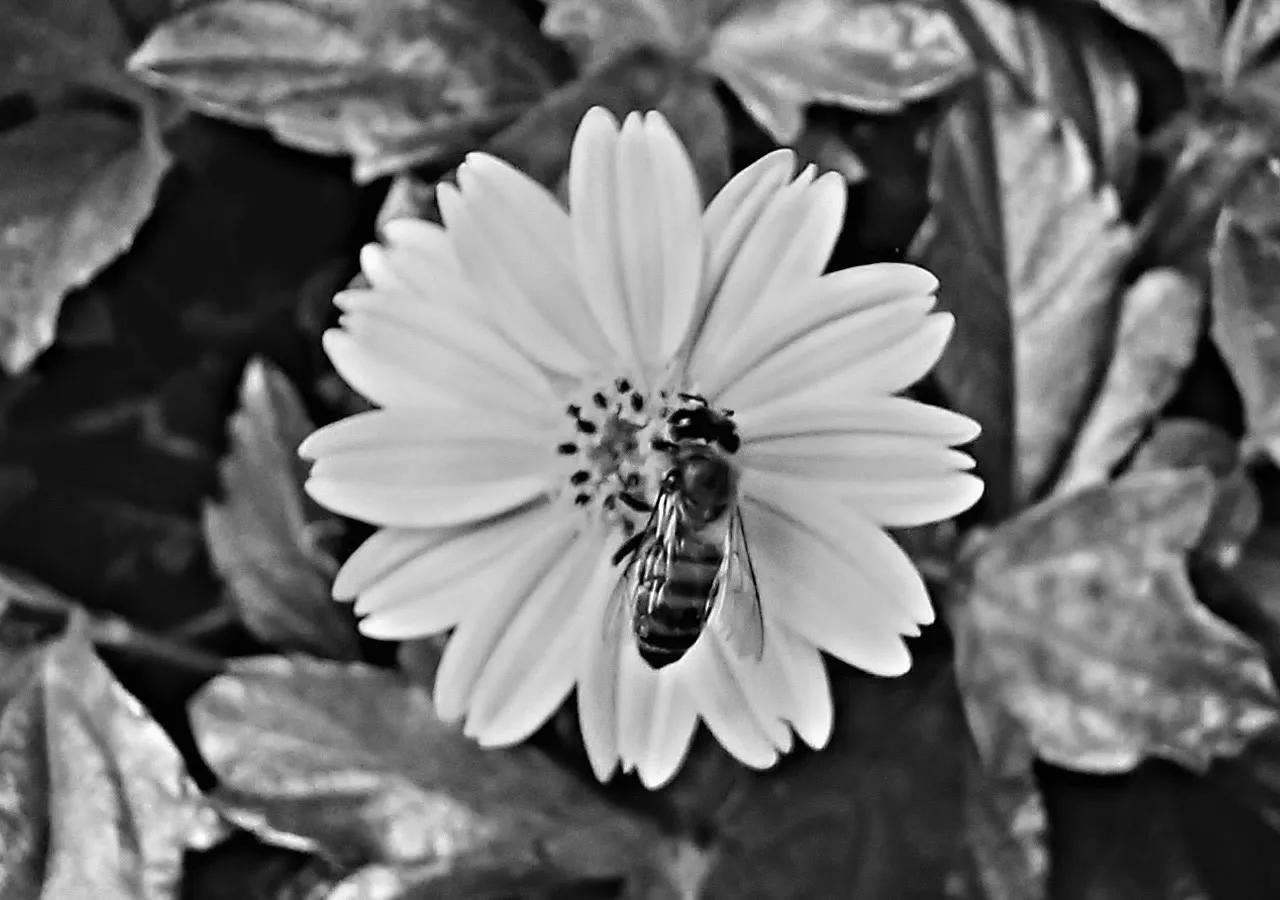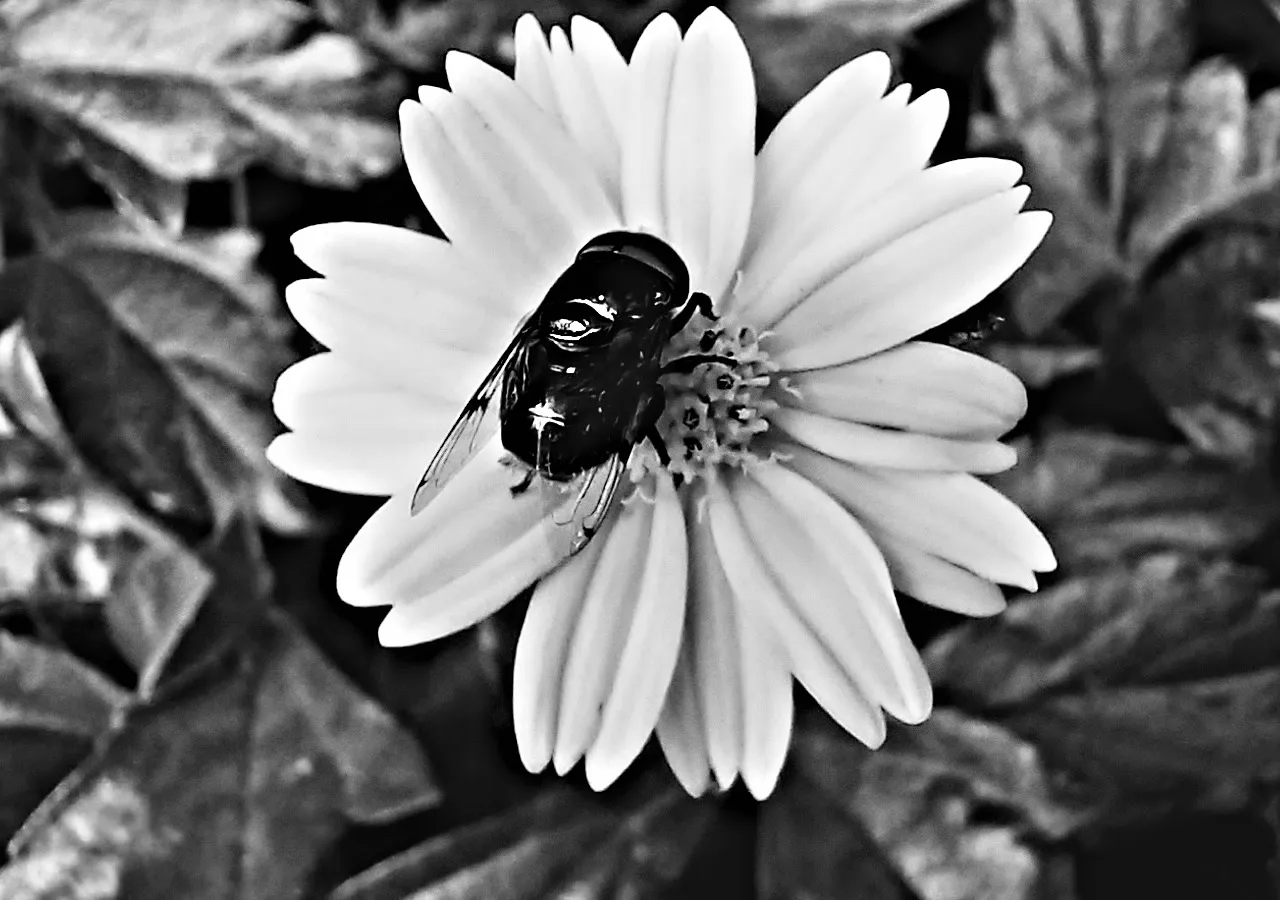"Lo más colorido del mundo es el blanco y negro, contiene todos los colores y al mismo tiempo los excluye a todos."
Vikrm

Abeja Solitaria
La fotografía en blanco y negro tiene un "no sé qué", algo poderoso que no sueles encontrar en una foto a color, tal vez, es una sensación de nostalgia que genera en los fotógrafos y espectadores, o sencillamente, permite visualizar los detalles en una imagen, que de otra manera pasarían desapercibidos para el ojo humano.
En la planta baja del edificio donde vive mi madre en la ciudad de Barquisimeto, Venezuela; existen unas jardineras ubicadas en la parte frontal de la edificación, justo por donde deben circular los propietarios o visitantes, salvo que se use el estacionamiento subterráneo; que se encuentran cubiertas de "margaritas rastreras", una variedad de planta que no supera los 30 cms. de altura y posee una flor de color amarillo intenso, con un diámetro que varía entre 2 a 4 cms., y que parecen muy atractivas para las abejas, porque cada vez que acudo a visitar a mi madre, encuentro 2 o 3 abejas merodeándolas.

Para tomar la fotografía con mi teléfono Samsung Galaxy A12, utilicé el filtro de B&W, además de la modalidad de fotografía Macro, que exije que la cámara se coloque a una distancia entre 3 a 5 cms. del objeto a fotografiar, lo que parece asustar a las abejas que inmediatamente emprenden el vuelo a otra flor, dificultando el proceso de fotografiarlas, ya que dispongo de unos pocos segundos a para accionar.
Posteriormente, con la aplicación Picsart, recorté y redimensioné las fotos, para luego aplicar un filtro de tipo HDR, buscando un resultado que me resulte satisfactorio, lo cual, lamentablemente no siempre logro, pero en esta ocasión, espero que el resultado sea del agrado de todos mis lectores.

Solitary Bee
Black and white photography has a "I don't know what", something powerful that you don't usually find in a color photo, perhaps, it is a sense of nostalgia that it generates in photographers and viewers, or simply, it allows to visualize the details in an image, which otherwise would go unnoticed to the human eye.
On the first floor of the building where my mother lives in the city of Barquisimeto, Venezuela; there are some planters located in the front of the building, just where the owners or visitors must circulate, unless the subway parking lot is used; which are covered with "creeping daisies", a variety of plant that does not exceed 30 cms. high and has a bright yellow flower, with a diameter ranging between 2 to 4 cms, They seem to be very attractive to bees, because every time I go to visit my mother, I find 2 or 3 bees hanging around them.

To take the picture with my Samsung Galaxy A12 phone, I used the B&W filter, in addition to the Macro photography mode, which requires the camera to be placed at a distance between 3 to 5 cms. from the object to be photographed, which seems to scare the bees that immediately take flight to another flower, hindering the process of photographing them, since I have a few seconds to act.
Later, with the Picsart application, I cropped and resized the photos, and then applied an HDR filter, looking for a satisfactory result, which unfortunately I do not always achieve, but this time, I hope that the result will be to the liking of all my readers.

This is my entry for the FOTOCELF Photography Contest.
Esta es mi participación para el FOTOCELF Concurso Fotográfico.

| Camera: | Samsung Galaxy A12 |
| Editor: | Picsart |
| Location: | Barquisimeto, Lara, Venezuela |
| Date: | 26-06-2022 |
